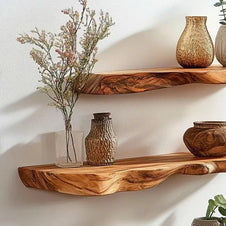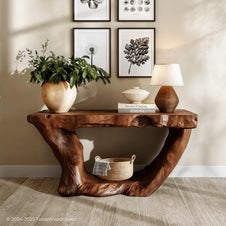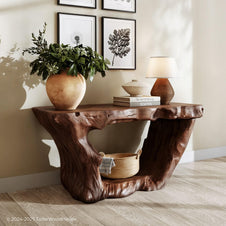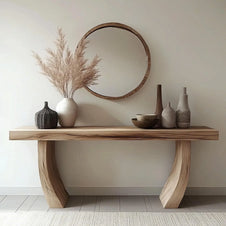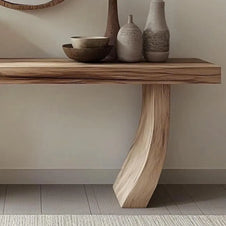Looking to bring nature indoors creatively and affordably? Tree branch shelves DIY projects are the perfect blend of rustic charm, sustainability, and functionality. This guide will walk you through everything, from materials to mounting, so you can start crafting your unique shelf today.
Understanding Tree Branch Shelves DIY
Tree branch shelves DIY refers to the creative process of building wall-mounted or standing shelves using real branches or limbs from trees. Unlike standard wooden planks, these natural elements offer irregular shapes and organic textures that bring a touch of nature into interior spaces.
This type of project is perfect for anyone seeking to blend practicality with natural beauty. Whether you want to add a rustic touch to your reading nook or need a small decorative shelf in a hallway, it gives you the flexibility to create something that feels personal, handcrafted, and eco-conscious.
People searching for this keyword are often drawn to DIY projects using natural or upcycled materials. They typically prefer aesthetics that are earthy, warm, and full of character, making tree branches the ideal material for their vision. From minimal floating shelves to artistic, sculptural pieces, this DIY trend is a great way to bring the outdoors in, naturally and affordably.
Why Choose Tree Branch Shelves DIY?
Creating your shelves using tree branches is not only satisfying but also full of practical benefits. Here’s why more and more DIYers are turning to tree branch shelves DIY:
1. Eco-Friendly and Natural Materials
Using real tree branches means you're repurposing what nature already offers. There's no need for synthetic or mass-produced materials, making your shelf environmentally responsible. You can collect fallen branches from your garden or local parks, just ensure they’re properly dried and treated.
2. Creative Expression and Uniqueness
Each branch is different in texture, shape, and grain, which means no two shelves will ever look the same. Tree branch shelves DIY allows you to reflect your style, whether it’s rustic, bohemian, minimalist, or Scandinavian. It’s a conversation piece and a work of art all in one.
3. Budget-Friendly Project
One of the biggest advantages of DIY tree is the low cost. You’ll often find most of the materials for free (especially the branches), and you’ll only need basic tools like a saw, drill, and screws. Compared to buying custom-designed shelves, this project can save you a lot of money.
In short, Tree Branch Shelves DIY combines style, sustainability, and affordability, making it an ideal weekend project that enhances both your home and your creativity.

Safe and charming, the Nursery Tree Bookcase adds a playful touch to children's spaces while keeping books and toys neatly organized.
Step-by-Step Guide to Creating Tree Branch Shelves DIY
Creating tree branch shelves DIY is not only a sustainable and affordable project but also an incredibly rewarding one. With the right approach and a bit of creativity, you can transform found wood into stylish, functional shelving for any room. Below are several practical and accessible methods to help you get started, whether you're a beginner or an experienced DIYer.
1. How to Make a Tree Branch Bookshelf?
Start by choosing sturdy branches: preferably hardwood like oak, maple, or birch, as they offer better strength and durability. The ideal branch should be at least 1 inch in diameter for smaller shelves and 2 inches or more for larger, weight-bearing applications.
Preparation steps:
-
Dry the branches: Fresh wood contains moisture that may lead to cracking or warping. Let branches dry for several weeks in a dry, well-ventilated space.
-
Strip bark and sand: Remove loose bark and sand the branch thoroughly to smooth out the surface and avoid splinters.
-
Seal the wood: Apply wood sealer, linseed oil, or beeswax for protection and a natural finish.
Mount your branch using:
-
Heavy-duty wall brackets, concealed L-brackets, or
-
Floating shelf hardware is inserted into pre-drilled dowel holes.
This method results in a custom tree branch shelves DIY project that balances rustic charm with structural integrity.
2. DIY Bookshelf Without Any Tools
Yes, it’s possible to approach tree branch shelves DIY even without access to power tools. Here’s how:
What you'll need:
-
Pre-cut reclaimed wood planks (hardware stores often offer cutting services).
-
Strong adhesives (like construction-grade wood glue or epoxy resin).
-
Wall mounting strips or adhesive hooks (for lightweight items only).
Assembly:
-
Use glue to attach smaller branches to a backboard or wooden plank.
-
If you're not mounting to a wall, you can lean the assembled board against a corner or place it atop a tabletop as decorative shelving.
Note: This low-tool method works best for lightweight shelving and is ideal for beginners, renters, or those working in shared spaces where drilling is not allowed.
3. Cheapest Method for Building Your Own Bookshelf
Affordability is one of the key appeals of tree branch shelves DIY. To keep costs minimal:
-
Use found materials: Look for branches after storms or pruning. Parks and forests (where permitted) are also good sources.
-
Repurpose old wood: Discarded pallets or unused furniture can be repurposed into backboards or brackets.
-
Use hand tools: Borrow from neighbors or look for community tool libraries.
Scientific principles of load distribution matter here: when mounting a shelf, ensure the branch is installed perpendicular to the wall, and weight is distributed closer to the wall mount. This reduces torque and prolongs the life of both the shelf and the wall anchor.
4. Building a Corner Tree Branch Shelf
Corners are often underutilized in small living spaces, making them perfect candidates for tree branch shelves DIY.
 A striking statement piece, this bookshelf brings raw, natural beauty indoors is perfect for those seeking a blend of artistry and functionality.
A striking statement piece, this bookshelf brings raw, natural beauty indoors is perfect for those seeking a blend of artistry and functionality.
Steps to maximize corner use:
-
Choose L-shaped branches or cut two straight branches to form a right angle.
-
Use two walls as natural support points, and anchor into wall studs for maximum safety.
-
Position shelves at staggered heights to create visual interest and adapt to various item sizes.
This method is ideal for compact apartments or minimalist interiors, providing both storage and a decorative element without occupying floor space.
Whether you're aiming for simplicity or an elaborate statement piece, tree branch shelves DIY offers endless possibilities. It’s a creative, cost-effective, and sustainable way to bring nature into your home, while optimizing even the smallest of spaces.
Choosing the Best Wood for Your Bookshelf
Selecting the right wood is a crucial step in any tree branch shelves DIY project. The material you choose affects not only durability and strength but also the visual appeal and how well the shelf fits your room’s overall style. Below is a breakdown of popular wood options, with pros and cons to help you choose the best one for your needs and budget.
For a more in-depth breakdown by function, style, and strength, check out this complete guide from Tailor Wood Haven.
1. Pine
-
Pros: Affordable, lightweight, easy to cut and sand is perfect for beginners.
-
Cons: Softer wood, so it may dent or scratch more easily over time.
-
Why choose: Ideal for light shelving and decorative tree branch shelves DIY that don’t need to bear heavy loads.
2. Oak
-
Pros: Extremely durable, long-lasting, with a classic grain and warm color.
-
Cons: Heavier and more expensive than pine; harder to work with manually.
-
Why choose: Great for large or functional shelving where strength matters most.
3. Plywood
-
Pros: Budget-friendly, stable, and available in large sheets.
-
Cons: Lacks the natural look of solid wood, and edges may require extra finishing.
-
Why choose: A solid choice if your tree branch shelves DIY involves backing or support boards.
4. Reclaimed Wood / Branches
-
Pros: Eco-friendly, low-cost or free, with lots of character.
-
Cons: May contain imperfections or moisture; requires more prep work.
-
Why choose: Perfect for rustic and sustainable designs that highlight texture and natural form.
When choosing the best wood for your dream tree bookshelf, consider how much weight the shelves will carry, the look you’re going for, and how much work you’re willing to put into preparation.

Clean lines and floating support make this branch shelf an elegant, space-saving addition - ideal for displaying decor without overpowering the room.
Practical Tips for Built-in Bookshelves
Creating tree branch shelves DIY is not just about maximizing storage. It’s also about blending style with structure.
-
Precise Measurements
To start, take precise measurements of your space, including ceiling height and wall width, especially if you're planning a floor-to-ceiling layout. This ensures that your tree branch shelves DIY project will fit seamlessly without awkward gaps or uneven placement.
-
Material Selection
Next, focus on material selection. Choose wood types and finishes that complement your interior, whether it’s modern minimalism or rustic charm. A clean installation also means concealing screws and brackets with molding or recessed panels for a smooth, custom-built look.
When working with irregular spaces like stair walls or sloped ceilings, modular shelving or custom cuts can help adapt the design. Drawing inspiration from IKEA Bookcases, known for flexible layouts, is a great start. And if sustainability matters to you, consider responsibly sourced wood. This article from Grist highlights IKEA’s forest-saving initiatives that align with eco-conscious building.
Finally, always plan with intention. Well-designed tree branch shelves DIY solutions not only organize your space, but they also enhance your home’s character and add handcrafted value to your interior.
 This sturdy pine masterpiece combines warm rustic charm with reliable support, perfect for homes seeking both style and functionality.
This sturdy pine masterpiece combines warm rustic charm with reliable support, perfect for homes seeking both style and functionality.
FAQs for Tree Branch Shelves DIY
-
Can I Build Tree Branch Shelves Without Power Tools?
Yes, you can. A handsaw, hammer, nails, wood glue, and sandpaper are often enough for a simple tree branch shelves DIY project. It may take more time than using power tools, but it’s completely doable for beginners.
-
How Expensive is it to DIY Shelves from Branches?
Costs are generally low. If you’re sourcing branches from your yard or local parks (with permission), you might only spend $10–$40 on basic materials like screws, wall brackets, and sealant.
-
What is the Cheapest Wood to Use for DIY Shelves?
Reclaimed wood, pine, or pallet wood are all affordable options. Branches from hardwood trees like oak or maple are sturdy and often free if naturally sourced.
-
How to Securely Attach Shelves to the Wall?
Use L-brackets, screws, and wall anchors appropriate to your wall type. Make sure to check the level and stability before loading items onto your tree shelves DIY setup.
Conclusion
Tree branch shelves DIY is more than just a home improvement project. It’s an opportunity to reconnect with nature, express your creativity, and reduce environmental impact, all while staying on budget.
Whether you're building for practicality or artistic flair, this guide empowers you to create a shelf that reflects your style and values. Ready to begin your project? Let nature be your material and inspiration.


